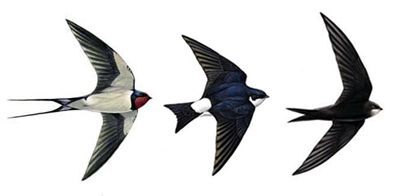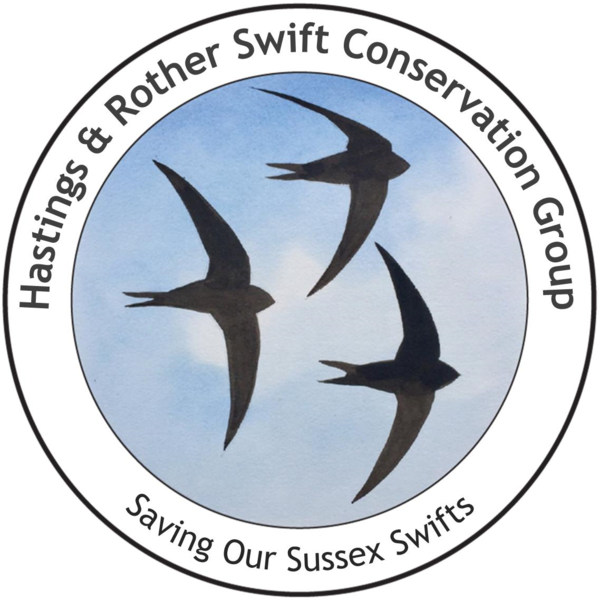Please take part in Swift Mapper! (click on above image)
Download the RSPB's SwiftMapper app to record our local swifts! Sightings are crucial in recording and working towards protection of traditional nesting sites in Hastings and Rother.
The numbers of swifts returning from Africa to breed in the UK is plummeting and they desperately need your help. The loss of nest sites is at least partly responsible. By using the Swift Mapper app you can help to monitor distribution and population changes. The data can also be used by local authority planners, architects, ecologists and developers to find out where swift “hotspots” are. It is hoped that this information will assist with providing suitable mitigation to protect breeding swifts during building development and renovations. Please record all swift nest sites you encounter. Records you submit can make a big difference to the conservation of swifts and reverse the decline of this charismatic bird.
'Swift Action to help the fastest of Birds' - This link is a 'must read' brilliant article on the BBC Springwatch site, that tells you a lot more about swifts and the importance of Swift Mapper. It concludes with some inspirational responses and observations from the public.
>>>>> <<<<<
SWIFT SURVEY TECHNIQUES
The best month to survey for Swifts in the UK is early to mid-July, when the population is at its biggest, enlarged by juvenile Swifts who fly in to Europe from Africa much later than the adults.
Best times - from half an hour before dawn to two hours after; and from two hours before dusk to half an hour after.
Weather - Warm to hot and dry days are best.
What to look for - Swifts flying round and round buildings and along streets at or just above roof top level, screaming. These are the local breeding Swifts and non-breeding juveniles who have attached themselves to the colony. They are demonstrating their territory by this noisy circling flight.
Beware confusing the Swifts with Swallows and Martins – see below.

Left to right: Swallow - Martin - Swift
.... or watch this identification video, produced by the BTO.
Ignore Swifts flying at a high level, well above the buildings, as they may not be local and could be from anywhere.
Surveying tip:
Walk slowly round the areas where there are low-flying, screaming Swifts. Count the circling flocks until you have an accurate estimate of birds in flight. You will need to do this several times as they are fast flyers and their criss-crossing flightpaths can be very confusing for the observer to disentangle.
Listen as the Swifts pass the buildings for the answering screams of Swifts still in their nests; they will answer the birds screaming as they pass by outside. Add those birds you can hear but cannot see to the total number.
You may detect Swift nests either as the Swifts enter or leave them, and just at dusk and shortly after, when the adults return to spend the night with the chicks.
A suggested initial step is to walk around the survey areas to detect the low flying screaming flocks and then mark the locations on a map. After that stage, conduct repeat visits to the marked areas to determine the numbers of Swifts and the exact locations of nests.
>>>>> <<<<<
WHAT SHOULD I DO IF I FIND A GROUNDED SWIFT?
Click here to follow our instructions on our dedicated page.
>>>>> <<<<<
Last, but not least ...
PLEASE CONSIDER DONATING
To encourage public interest in saving our swifts, we keep the cost of nest bricks, boxes and installations low and ask only a voluntary donation if you wish to become a member of the group.
So ...
1. If you wish to pay a little more for your installation ... or
2. Would like to fund a nest brick/box/es on other properties, if your home is not suitable ... or
3. Feel you would like to help by making a small donation towards our costs ...
We would be extremely grateful for your kind support. Just let us know via our Contact page.



